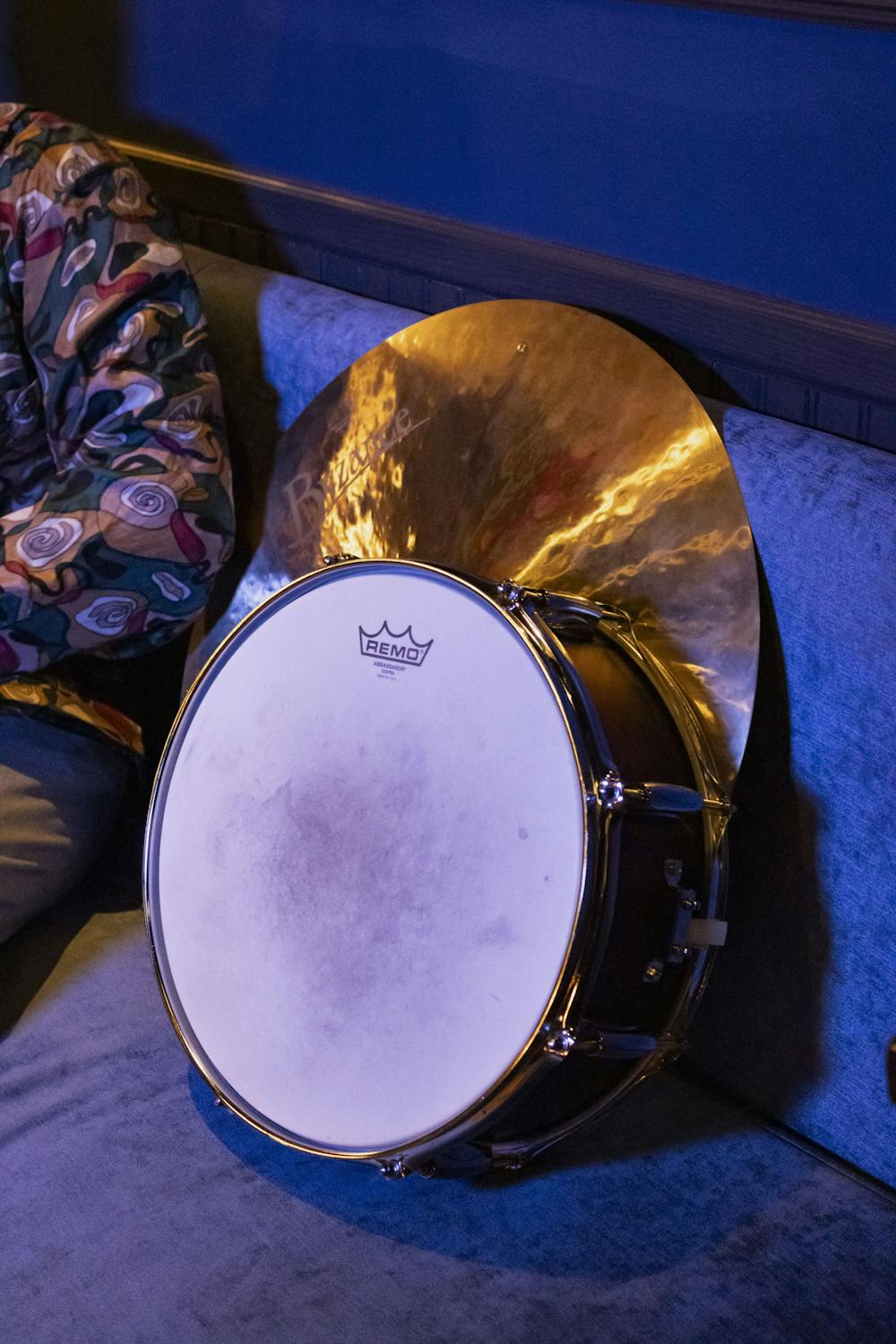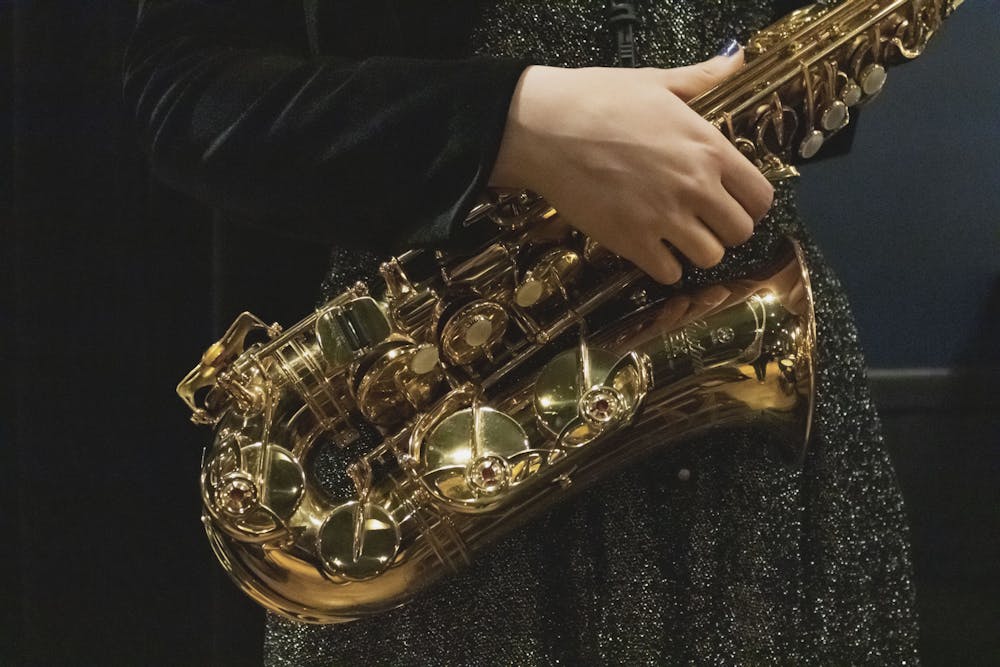The horns could be heard through the dorms' centuries-old walls. It was mid-October and, under the browning leaves of the historic oak trees, the Left Bank Big Band was sound-checking for "Jazz on the Horseshoe." The show was a democratic project; its open-air format and lack of an entrance fee made the concert accessible for all spectators. However, jazz music's history in Columbia has long been influenced by questions of access, with historical contexts shaping concert bookings long before the saxophone played its first note. On the Horseshoe that night, itself a palimpsest of Columbia's wrought social history, the capital city continued the musical legacy stretching back to the Township Auditorium, the Main Street Jazz Festival, Barkoot's Lake Lodge and the Big Apple.
At the beginning of the 20th century, when jazz was spawning out of the bars and brothels of New Orleans' Storyville neighborhood, Columbia was producing a slew of vaudeville talent. Vaudeville, defined as the touring variety shows that featured comedy, music and minstrelsy, contained some of the earliest sources of inspiration for the burgeoning jazz scene. Such proto-jazz was performed by Hamtree Harrington, a popular Black vaudeville performer born in Columbia during the 1890s. Harrington joined the vaudeville circuit in 1910 and started recording humorous interpretations of jazz standards during the 1920s. Billy Higgins, also known as "Jazz Caspar," a Columbian contemporary of Harrington, ventured into comedic proto-jazz as well, creating many highly popular vaudeville recordings.

A commonality exists between both of these vaudeville stars: they didn't return to Columbia after they entered the vaudeville circuit: Harrington and Higgins both settled in New York City. There's scant documentation as to why these entertainers decided to stay up north, leaving only room to theorize about their possible rationale. It could have been New York's thriving jazz scene or the city's abundance of music publishers, or it could have been Columbia's entrenchment in Jim Crow ideology, which worked towards stifling the expression of Black South Carolinians.
As such, Columbia's early history with jazz focused on producing, not consuming. But as the '20s moved into the '30s and jazz spread beyond its metropolitan roots, Columbia began to establish a domestic jazz community, in large part due to the Big Apple nightclub.
In 1936, businessmen Frank "Fat Sam" Boyd and "Big" Elliot Wright signed a lease for a vacant synagogue located at 1000 Hampton St. The duo converted the synagogue into a dance club, named it the Big Apple and installed a sound system stocked with the most popular jazz records of the day. The club attracted many Black customers, in large part due to its proximity to the predominantly Black Park Street neighborhood. These attendees would soon be responsible for starting one of America's largest dance crazes from the Big Apple's dance floor.
As jazz played from the club's sound system, dancers at the Big Apple would form small circles of six to eight people. These circles would have a "leader," who called out specific moves that the dancers would then replicate. Soon, this form of dancing would be given a name: the "Big Apple Dance." The dance would keep that name as it spread to clubs across the South, eventually reaching some of the North's most prestigious ballrooms. However, the craze also elicited a response from a surprising demographic: Columbia's white population.
White customers began arriving at the Big Apple's doorstep soon after the dance's creation, placing the club's owners in a social conundrum. The standard practice at many South Carolinian businesses of this era was segregation, and it was expected that the Big Apple would follow similar protocol. Eventually, the owners decided to admit white customers to the balcony section, where they could watch the Black dancers below. This separation was early evidence of one of the longest-lasting traditions in Columbia jazz culture: the segregated concert.
The Big Apple Dance put Columbia on the jazz world's radar, and many national jazz acts began to see Columbia as a viable jazz destination. As a result, a variety of acclaimed jazz musicians started playing shows at the Township Auditorium. Louis Armstrong played the Township in 1944, as did Duke Ellington in 1947. Still, the Township maintained a strict segregation policy that was often determined by the race of the performer. Armstrong and Ellington's shows were marketed as "colored dances," meaning that white spectators would sit in the balcony—often for a lower price—while Black dancers would stay on the dance floor. However, when Sammy Kaye, a white bandleader with an all-white band, performed at the Township in 1946, no such distinction was made.
The Township continued to be the premier venue for Columbia's jazz scene throughout the 1950s, with a rotating cast of traveling jazz acts making stops in the Soda City. At the decade's close, however, jazz would cement itself as an integral part of Columbia's culture through the arrival of a new crop of musicians and music journalists. This arrival would begin in 1958 with the establishment of the Columbia Jazz Club.
According to the June 26, 1958 edition of The State, the CJC was created "to foster the enjoyment of all types of jazz music." The club strove towards this goal through a community-centric approach that prioritized the inclusion of jazz into Columbia's cultural diet. The CJC hosted monthly meetings at the Knights of Columbus hall, sponsored jazz workshops at the Columbia Art Museum, broadcast jazz-centric radio shows on WCOS and documented all the major developments of 1960s Soda City jazz through their monthly periodical, The Cat's Meow.
But most importantly, the CJC put on one of the first jazz festivals in the Columbia area. The Carolina Summer Jazz Festival—a CJC-produced festival hosted near Columbia at Barkoot's Lake Lodge—ran for multiple years during the 1960s, bringing both local and non-local jazz talent to the Soda City. The 1964 edition of the festival was especially significant, as Billy Butterfield, a nationally renowned bandleader, headlined the festival, indicating Columbia's growing renown in the worldwide jazz community.
The larger political contexts of the 1950s and 1960s also foreshadowed new shifts in Columbia's jazz culture. The idea of segregated concerts, a constant for nearly all of Columbia's jazz history, began to be challenged by the proliferation of integrated concerts. Johnny Helms, one of Columbia's most celebrated jazz musicians, once played with a band to a multi-racial audience, an experience he related to jazz historian Benjamin Franklin V in "Jazz and Blues Musicians in South Carolina." "One Sunday afternoon," Helms recalled, "we were playing at a club that the sheriff shut down because it had an integrated audience. I didn't let that bother me. We still played."
Columbia continued to grow as a jazz destination in the 1970s, with bands playing large venues and local clubs alike. Interestingly, some of the most important growth in this time period happened in gymnasiums and football fields. In Columbia's grade school marching and jazz bands, another wave of jazz talent was being developed. Soon, this wave would break.
Chris Potter and Ron Westray both received some of their earliest musical training within the grade schools of Columbia. Potter, a saxophonist, was an active member of the Hand Middle School and Dreher High School bands, developing his musical technique with the help of his teachers. Likewise, Westray, a trombonist, was first exposed to his instrument at Fairwold Middle School, eventually honing his skills in the Keenan High School marching band. This early exposure to music would be invaluable to both musicians, as both became respected professionals for their instruments. Potter's virtuoso saxophone abilities earned him over fifteen albums as bandleader and a reputation as one of the best saxophone players in the world. Westray's mastery of trombone got him spots in the Mingus Big Band and the Lincoln Center Jazz Orchestra, as well as a professorship in jazz performance at York University. Both are regarded as some of Columbia's best modern jazz exports.
A new spot for jazz opened up to accommodate this new wave, perhaps larger and more public-facing than anything that came before it. In 1987, Johnny Helms, a Columbia-based jazz musician, and Veron Melas, a Columbia-based restauranteur, put on the first edition of the Main Street Jazz Festival, an open-air festival held on downtown Main Street. The festival was a spiritual successor to the Carolina Summer Jazz Festival, but its central location in the city made jazz accessible to the citizens of Columbia. In the city that had long been marred by segregation, jazz was finally available to all residents.
This brand of accessibility, according to ColaJazz chair Mark Rouse, is the guiding ethos of ColaJazz, Columbia's newest jazz development. Founded in 2015, ColaJazz is a nonprofit organization dedicated to spreading jazz appreciation throughout the Midlands, often through free concerts or workshops. ColaJazz is also a major player in the promotion of Columbia's local scene, highlighting the venues and artists that sustain the city's jazz community. Rouse mentioned how the city currently has "a vibrant and thriving scene in both world-class performers and venues," with musicians such as Mark Rapp and Dr. Mitch Butler often performing at the Koger Center, the Joint and the Aristocrat. In Rouse's eyes, ColaJazz encourages citizens to interact with this vibrant scene.
"As with all facets of the arts, it is imperative to grow an informed audience of listeners and performers," he said. "If we don't help expose them to jazz, how will they discover its beauty and majesty?"
Rouse also acknowledged the importance of Columbia's jazz history as a basis for how ColaJazz functions today. He drew a direct comparison between the Main Street Jazz Festival and the modern-day ColaJazz Festival, both of which are held on Main Street.
"As we pay homage to the past festival, we look to provide a new and vibrant festival," he commented.
The history behind the music will always be present in Columbia's jazz scene. The celebrated accomplishments of the Big Apple and the Main Street Jazz Festival are paired with the injustice of concert segregation and Jim Crow, both serving as core factors in the development of jazz in the city. Nevertheless, the music continued through the decades, reshaping Columbia's cityscape and inspiring thousands of musicians in the process. Now, with ColaJazz and other outreach organizations, the genre has a community that is just as supportive and collaborative as jazz improvisation itself. Rouse mentioned how jazz music "has taught us to persevere with intelligence, style and grace, be creative, work with others, celebrate differences, respect traditions while breaking new ground and be your best self while advancing the group." In this current community-centric scene, these values can be fully celebrated.
The Left Bank Big Band stopped their sound check as Dr. Matt White, the band director, stepped towards the microphone. He thanked the audience for being there, then announced the song list for that evening's concert. He turned towards the band; the musicians readied their instruments. Like so many of Columbia's previous jazz shows, the band began to play.



